Splinting for the non-operative management of developmental dysplasia of the hip (DDH) in children under six months of age
- PMID: 36214650
- PMCID: PMC9549867
- DOI: 10.1002/14651858.CD012717.pub2
Splinting for the non-operative management of developmental dysplasia of the hip (DDH) in children under six months of age
Abstract
Background: Developmental dysplasia of the hip (DDH) describes the abnormal development of a hip in childhood, ranging from complete dislocation of the hip joint to subtle immaturity of a hip that is enlocated and stable within the socket. DDH occurs in around 10 per 1000 live births, though only one per 1000 are completely dislocated. There is variation in treatment pathways for DDH, which differs between hospitals and even between clinicians within the same hospital. The variation is related to the severity of dysplasia that is believed to require treatment, and the techniques used to treat dysplasia.
Objectives: To determine the effectiveness of splinting and the optimal treatment strategy for the non-operative management of DDH in babies under six months of age.
Search methods: We searched CENTRAL, MEDLINE, Embase, seven other electronic databases, and two trials registers up to November 2021. We also checked reference lists, contacted study authors, and handsearched relevant meetings abstracts.
Selection criteria: Randomised controlled trials (RCTs), including quasi-RCTs, as well as non-RCTs and cohort studies conducted after 1980 were included. Participants were babies with all severities of DDH who were under six months of age. Interventions included dynamic splints, static splints or double nappies (diapers), compared to no splinting or delayed splinting.
Data collection and analysis: Two review authors independently selected studies, extracted data and performed risk of bias and GRADE assessments. The primary outcomes were: measurement of acetabular index at years one, two and five, as determined by radiographs (angle): the need for operative intervention to achieve reduction and to address dysplasia; and complications. We also investigated other outcomes highlighted by parents as important, including the bond between parent and child and the ability of mothers to breastfeed.
Main results: We included six RCTs or quasi-RCTs (576 babies). These were supported by 16 non-RCTs (8237 babies). Five studies had non-commercial funding, three studies stated 'no funding' and 14 studies did not state funding source. The RCTs were generally at unclear risk of bias, although we judged three RCTs to be at high risk of bias for incomplete outcome data. The non-RCTs were of moderate and critical risk of bias. We did not undertake meta-analysis due to methodological and clinical differences between studies; instead, we have summarised the results narratively. Dynamic splinting versus delayed or no splinting Four RCTs and nine non-RCTs compared immediate dynamic splinting and delayed dynamic splinting or no splinting. Of the RCTs, two considered stable hips and one considered unstable (dislocatable) hips and one jointly considered unstable and stable hips. No studies considered only dislocated hips. Two RCTs (265 babies, very low-certainty evidence) reported acetabular index at one year amongst stable or dislocatable hips. Both studies found there may be no evidence of a difference in splinting stable hips at first diagnosis compared to a strategy of active surveillance: one reported a mean difference (MD) of 0.10 (95% confidence interval (CI) -0.74 to 0.94), and the other an MD of 0.20 (95% CI -1.65 to 2.05). Two RCTs of stable hips (181 babies, very low-certainty evidence) reported there may be no evidence of a difference between groups for acetabular index at two years: one study reported an MD of -1.90 (95% CI -4.76 to 0.96), and another study reported an MD of -0.10 (95% CI -1.93 to 1.73), but did not take into account hips from the same child. No study reported data at five years. Four RCTs (434 babies, very low-certainty evidence) reported the need for surgical intervention. Three studies reported that no surgical interventions occurred. In the remaining study, two babies in the dynamic splinting group developed instability and were subsequently treated surgically. This study did not explicitly state if this treatment was to achieve concentric reduction or address residual dysplasia. Three RCTs (390 babies, very low-certainty evidence) reported no complications (avascular necrosis and femoral nerve palsy). Dynamic splinting versus static splinting One RCT and five non-RCTs compared dynamic versus static splinting. The RCT (118 hips) reported no occurrences of avascular necrosis (very low-certainty evidence) and did not report radiological outcomes or need for operative intervention. One quasi-RCT compared double nappies versus delayed or no splinting but reported no outcomes of interest. Other comparisons No RCTs compared static splinting versus delayed or no splinting or staged weaning versus immediate removal.
Authors' conclusions: There is a paucity of RCT evidence for splinting for the non-operative management of DDH: we included only six RCTs with 576 babies. Moreover, there was considerable heterogeneity between the studies, precluding meta-analysis. We judged the RCT evidence for all primary outcomes as being of very low certainty, meaning we are very uncertain about the true effects. Results from individual studies provide limited evidence of intervention effects on different severities of DDH. Amongst stable dysplastic hips, there was no evidence to suggest that treatment at any stage expedited the development of the acetabulum. For dislocatable hips, a delay in treatment onset to six weeks does not appear to result in any evidence of a difference in the development of the acetabulum at one year or increased risk of surgery. However, delayed splinting may reduce the number of babies requiring treatment with a harness. No RCTs compared static splinting with delayed or no splinting, staged weaning versus immediate removal or double nappies versus delayed or no splinting. There were few operative interventions or complications amongst the RCTs and the non-randomised studies. There's no apparent signal to indicate a higher frequency of either outcome in either intervention group. Given the frequency of this disease, and the fact that many countries undertake mandatory DDH screening, there is a clear need to develop an evidence-based pathway for treatment. Particular uncertainties requiring future research are the effectiveness of splinting amongst stable dysplastic hips, the optimal timing for the onset of splinting, the optimal type of splint to use and the need for 'weaning of splints'. Only once a robust pathway for treatment is established, can we properly assess the cost-effectiveness of screening interventions for DDH.
Trial registration: ClinicalTrials.gov NCT00843258 NCT01375218 NCT02885831.
Copyright © 2022 The Cochrane Collaboration. Published by John Wiley & Sons, Ltd.
Conflict of interest statement
KD is a Statistical Editor with the Cochrane Editorial and Methods Department.
JK: has declared that he has no conflicts of interest.
RP was a Consultant Orthopaedic Surgeon with East Lancashire Hospitals NHS Trust, Blackburn, at the time this review was written; he has since retired (as of 27 April 2022). He is a member of the British Society for Children's Orthopaedic Surgery, and was an elected Council Member (five‐year appointment from 2016 to 2021) and Trustee of the Royal College of Surgeons of Edinburgh (a registered charity), where he was involved in postgraduate education and various faculties and examinations in the College, and received in‐kind support; unpaid positions. RP was awarded the King James IV Professorship from the Royal College of Surgeons of Edinburgh for 2016/17, and reports fees and an honorarium for a lecture on 'screening in DDH', presented at the British Orthopaedic Association in Belfast in 2016, which he gave as part of this award; personal payment. RP also reports an honorarium and travel expenses from the Chinese University of Hong Kong in March 2019 for being an external assessor for the surgical finals; travel and hotel expenses from East Lancashire Hospitals NHS Trust, to attend the British Society for Children's Orthopaedics in March 2017; and travel and hotel expenses from the Royal College of Surgeons of Edinburgh, to attend council meetings and other college committees; all personal payments. In addition, RP reports fees for expert testimony from a private, medio‐legal practice on trauma until December 2015, for four supplementary medico‐legal reports and a medico‐legal report on DDH; and fees for 'ad hoc' consultancy services (1 May 2020 to the 30 April 2021), to review the orthopaedic aspects of basic science research and to interpret the clinical aspects of stage III trials on a possible injection treatment for osteo‐arthritis of the knee for a pharmaceutical company (this did not involve the hip joint, children or developmental dysplasia of the hip); all personal payments. RP's main research interest is in screening for DDH, and he has published many peer reviewed articles and a PhD (2011, University of Lancaster). He was involved in the following, unfunded studies, all of which were retrospective analyses of ongoing prospective research data that had been approved by the ethics and research department at the East Lancashire Hospitals NHS Trust where they were undertaken, and which were eligible for inclusion in this review: 1) Paton RW, Hopgood PJ, Eccles C. Instability of the neonatal hip: the role of early or late splintage. International Orthopaedics. 2004;38(5):270‐3; 2) Sampath JS, Deakin S, Paton RW. Splintage in developmental dysplasia of the hip. How low can we go? Journal of Pediatric Orthopedics. 2003;23(3):352‐5; 3) Paton RW, Paniker J. Comment on 'The efficacy of the Pavlik Harness, the Craig splint ad the von Rosen splint in the management of neonatal dysplasia of the hip. PMID: 14516053'. Journal of Bone and Joint Surgery. 2003; 85‐B(7):1086. PMID: 14516054. RP was not involved in assessing eligibility, extracting data, assessing risk of bias or grading the certainty of the evidence from the study included in this review. RP is an unpaid, peer reviewer for the following journals: 'The Surgeon'; 'The Knee'; 'The Bone & Joint Journal' and 'The Journal of Paediatrics'.
EM: reports travel and time‐related expenses from Steps Charity, for attending meetings related to the BOSS (British Orthopaedic Surgery) study and the Newborn and Infant Physical Examination (NIPE) Advisory Board were she served as a patient advocate through her work at Steps Charity specialising in DDH detection; personal payment. EM is involved with the Newborn and Infant Physical Examination Board. Previously employed by Steps Charity Worldwide ‐ a charity offering to support for families of children affected by lower limb conditions.
AN: has declared that he has no conflicts of interest.
DP: reports grants from the National Institute of Health Research, Arthritis Research UK, and Perthes' Association and Medtronic for work pertaining to diseases of children's orthopaedics; paid to the University of Oxford. DP also reports a US $10k travelling fellowship from the British Society of Children's Orthopaedic Surgery for research development, which was indirectly funded by Orthopediatrics; paid to the University of Oxford. DP is the National Clinical Advisor to the Hip Screening Programme within Public Health England.
Figures
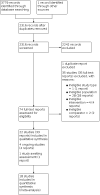



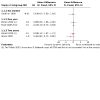

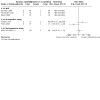




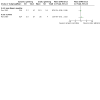
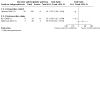

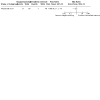
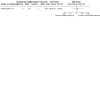

Update of
- doi: 10.1002/14651858.CD012717
References
References to studies included in this review
Azzoni 2011 {published data only}
-
- Azzoni R, Cabitza P. A comparative study on the effectiveness of two different devices in the management of developmental dysplasia of the hip in infants. Minerva Pediatrica 2011;63(5):355-61. [PMID: ] - PubMed
Bergo 2013 {published data only}
Bram 2021 {published data only}
Gardiner 1990 {published data only}
Gou 2021 {published data only}
-
- Gou P, Zhang Y, Wu J, Li J, Li X, Li M, et al. Human position brace versus Pavlik harness for infants under 6 months of age with developmental dislocation of the hip: a comparison of therapeutic efficacy. Journal of Pediatric Orthoptics 2021;41(7):e545-9. [DOI: 10.1097/BPO.0000000000001862] [PMID: ] - DOI - PubMed
Kim 2019 {published data only}
-
- Flores E, Kim HK, Beckwith T, Lloyd A, De La Rocha A, Paraison Lauren, et al. Pavlik harness treatment may not be necessary for all newborns with ultrasonic hip dysplasia. Journal of Pediatric Health Care 2016;30(4):304-5. [DOI: 10.1016/j.pedhc.2016.04.006] - DOI
-
- Zepeda EF. Re: Pavlik Harness Treatment May Not Be Necessary for All Newborns With Ultrasonic Hip Dysplasia [personal communication]. Email to: K Dwan; T Beckwith 12 February 2019.
Laborie 2014 {published data only}
-
- Laborie LB, Bruras K, Davidsen H, Aukland SM, Bjorlykke JA, Markestad T, et al. Selective ultrasound screening for developmental dysplasia of the hip in newborns: effects on registered prevalence, treatment, follow-up and late detected cases. Preliminary results. Pediatric Radiology 2013;43(Suppl 3):S569. [ABSTRACT #: 093 - LP] [DOI: 10.1007/s00247-013-2675-4] - DOI
-
- Laborie LB, Markestad TJ, Davidsen H, Brurås KR, Aukland SM, Bjørlykke HA. Selective ultrasound screening for developmental hip dysplasia: effect on management and late detected cases. A prospective survey during 1991-2006. Pediatric Radiology 2014;44(4):410-24. [DOI: 10.1007/s00247-013-2838-3] [PMID: ] - DOI - PubMed
Larson 2019 {published data only}
Lee 2022 {published data only}
Lyu 2021 {published data only}
Munkhuu 2013 {published data only}
-
- Munkhuu B, Essig S, Renchinnyam E, Schmid R, Wilhelm C, Bohlius J, et al. Correction: incidence and treatment of developmental hip dysplasia in Mongolia: a prospective cohort study. PLoS One 2014;9(1):10.1371/annotation/3208b134-74de-4884-bd5a-0eb2e6c878ec. [DOI: 10.1371/annotation/3208b134-74de-4884-bd5a-0eb2e6c878ec] - DOI - PMC - PubMed
-
- Munkhuu B, Essig S, Renchinnyam E, Schmid R, Wilhelm C, Bohlius J, et al. Incidence and treatment of developmental hip dysplasia in Mongolia: a prospective cohort study. PLoS ONE 2013;8(10):e79427. Erratum in: PLoS One. 2014;9(1). DOI:10.1371/annotation/3208b134-74de-4884-bd5a-0eb2e6c878ec. [DOI: 10.1371/journal.pone.0079427] [PMCID: PMC3812003] [PMID: ] - DOI - PMC - PubMed
Murphy 2017 {published data only}
-
- Murphy L, O'Beirne J. Outcomes of graf type iia hips: is harnessing required? Irish Journal of Medical Science 2017;186(2):S109-10. [ABSTRACT #: 117] [DOI: 10.1007/s11845-017-1553-8] - DOI
Paton 2004 {published data only}
-
- Sampath JS, Deakin S, Paton RW. Splintage in developmental dysplasia of the hip: how low can we go? Journal of Pediatric Orthopedics 2003;23(3):352-5. [PMID: ] - PubMed
Pollett 2020 {published data only}NL3078
-
- NL3078. Is splinting for stable hip dysplasia necessary in infants between 3 and 6 months of age? [The effect of abduction treatment on stable developmental dysplasia of the hips in infants between 3 and 6 months of age]. www.trialregister.nl/trial/3078 first received 6 January 2012. [NETHERLANDS TRIAL REGISTER: NL3078]
-
- Pollet V, Castelein RM, Van de Sande M, Witbreuk M, Mostert AK, Besselaar A, et al. Abduction treatment in stable hip dysplasia does not alter theacetabular growth: results of arandomized clinical trial. Scientific Reports 2020;10(1):9647. [DOI: 10.1038/s41598-020-66634-1] [PMCID: PMC7296030] [PMID: ] - DOI - PMC - PubMed
Ran 2020 {published data only}
-
- Ran L, Chen H, Pan Y, Lin Q, Canavese F, Chen S. Comparison between the Pavlik harness and the Tübingenhip flexion splint for the early treatment of developmentaldysplasia of the hip. Journal of Pediatric Orthopaedics. Part B 2020;29(5):424-30. [DOI: 10.1097/BPB.0000000000000667] [PMID: ] - DOI - PubMed
Reikerås 2002 {published data only}
-
- Reikerås O, Kristiansen LP, Gunderson R. Ultrasonography of the infant hip: the significance of provokable instability with normal morphology. Orthopedics 2002;25(8):833-5. [PMID: ] - PubMed
Rosendahl 2010 {published data only}
-
- NCT00843258. Treatment for mild hip dysplasia in newborns [Immediate treatment compared with active sonographic surveillance in the management of mild hip dysplasia in newborn infants: a randomized, controlled trial]. clinicaltrials.gov/ct2/show/NCT00843258 (first received 13 February 2009). [CLINICALTRIALS.GOV: NCT00843258]
Sucato 1999 {published data only}
-
- Sucato DJ, Johnston CE 2nd, Birch JG, Herring JA, Mack P. Outcome of ultrasonographic hip abnormalities in clinically stable hips. Journal of Pediatric Orthopedics 1999;19(6):754-9. [PMID: ] - PubMed
Upasani 2016 {published data only}
-
- Upasani VV, Bomar JD, Matheney TH, Sankar WN, Mulpuri K, Price CT, et al. Evaluation of brace treatment for infant hip dislocation in a prospective cohort: defining the success rate and variables associated with failure. Journal of Bone & Joint Surgery. American Volume 2016;98(14):1215-21. [DOI: 10.2106/JBJS.15.01018] [PMID: ] - DOI - PubMed
Westacott 2014 {published data only}
Wilkinson 2002 {published data only}
-
- Paton RW, Paniker J. The efficacy of the Pavlik harness, the Craig splint and the von Rosen splint in the management of neonatal dysplasia of the hip. Author reply to PMID 14516053. Journal of Bone & Joint Surgery. British Volume 2003;85-B(7):1086. [DOI: 10.1302/0301-620X.85B7.0851086a] [PMID: ] - DOI - PubMed
-
- Wilkinson AG, Sherlock DA, Murray GD. The efficacy of the Pavlik harness, the Craig splint and the Von Rosen splint in the management of neonatal dysplasia of the hip. A comparative study. Journal of Bone & Joint Surgery. British Volume 2002;84-B(5):716-9. [DOI: 10.1302/0301-620x.84b5.12571] [PMID: ] - DOI - PubMed
Wood 2000 {published data only}
-
- Wood MK, Conboy V, Benson MK. Does early treatment by abduction splintage improve the development of dysplastic but stable neonatal hips? Journal of Pediatric Orthopedics 2000;20(3):302-5. [PMID: ] - PubMed
References to studies excluded from this review
Atar 1993 {published data only}
Avci 2000 {published data only}
-
- Avci S, Sayli U. The efficiency of abduction diapering for prevention of developmental hip dysplasia [Turkish]. Artroplasti Artroskopik Cerrahi 2000;11(1):52-5. [URL: www.jointdrs.org/abstract/781]
Breitenfelder 1982 {published data only}
-
- Breitenfelder J, Yücel M. Is it possible to avoid reconstruction disorders of the head in the treatment of hip dysplasia? Acta Chirurgiae Orthopaedicae et Traumatologiae Cechoslovaca 1982;49(6):504-8. [PMID: ] - PubMed
Brien 2000 {published data only}
-
- Brien EW, Randolph DA, Zahiri CA. Radiographic analysis to determine the treatment outcome in developmental dysplasia of the hip. American Journal of Orthopedics 2000;29(10):773-7. Erratum in: American Journal of Orthopedics 2001;30(2):151. [PMID: ] - PubMed
Burger 1990 {published data only}
Burgess 2017 {published data only}
Burian 2010 {published data only}
-
- Burian M, Dungl P, Chomiak J, Oštádal M, Frydrychová M. Efficiency of conservative treatment by overhead traction in developmental dysplasia of the hip. Acta Chirurgiae Orthopaedicae et Traumatologiae Cechoslovaca 2010;77(5):371-7. [PMID: ] - PubMed
Chaitow 1984 {published data only}
-
- Chaitow J, Lillystone D. Congenital dislocation of the hip. Incidence, and treatment of a local population group. Medical Journal of Australia 1984;140(9):534-5. [PMID: ] - PubMed
Cook 2019 {published data only}
Cuny 1982 {published data only}
-
- Cuny C, Hahn L, Prevot J. Congenital luxation of the hip and Pavlik harness [French]. Annales Medicales de Nancy et de l'Est 1982;21:453-5.
De Pellegrin 2019 {published data only}
-
- De Pellegrin M, Marcucci L, Moharamzadeh D, Fracassetti D. A49 Early treatment of DDH significantly influences the acetabulum's growth in newborns. Italian Journal of Pediatrics 2019;45(Suppl 3):188-9. [DOI: 10.1186/s13052-019-0746-3] - DOI
Dunn 1985 {published data only}
Elbourne 2002 {published data only}
-
- Elbourne D, Dezateux C, Arthur R, Clarke NM, Gray A, King A, et al. Ultrasonography in the diagnosis and management of developmental hip dysplasia (UK Hip Trial): clinical and economic results of a multicentre randomised controlled trial. Lancet 2002;360(9350):2009-17. [DOI: 10.1016/s0140-6736(02)12024-1] [PMID: ] - DOI - PubMed
Heikkilä 1984 {published data only}
Heikkilä 1988 {published data only}
Hinderaker 1992 {published data only}
Hines 2019 {published data only}
-
- Hines AC, Neal DC, Beckwith T, Jo C, Kim HK. A comparison of Pavlik harness treatment regimens for dislocated but reducible (Ortolani +) hips in infantile developmental dysplasia of the hip. Journal of Pediatric Orthopaedics 2019;39(10):505-9. [DOI: 10.1097/BPO.0000000000001052] [PMID: ] - DOI - PubMed
Iwasaki 1987 {published data only}
Kruczyński 1990 {published data only}
-
- Kruczyński J, Lempicki A, Wierusz-Kozłowska M. Avascular necrosis of the hip in radiologic images during treatment using the Freyka pillow for congenital hip dislocation [Polish]. Chirurgia Narzadow Ruchu i Ortopedia Polska 1990;55(4-6):335-9. [PMID: ] - PubMed
Lempicki 1989 {published data only}
-
- Lempicki A, Wierusz-Kozłowska M, Kruczyński J, Soboń B. Early results of the treatment of congenital hip dysplasia with dislocation at the Preluxation Clinic in Poznań [Polish]. Chirurgia Narzadow Ruchu i Ortopedia Polska 1989;54(3):256-61. [PMID: ] - PubMed
Ligier 1984 {published data only}
-
- Ligier JN, Braun E, Metaizeau JP, Gueriot S. Failure of Pavlik's harness in the treatment of hip congenital luxation [French]. Annales Médicales de Nancy et de l'Est 1984;23:103-6.
McKibbin 1988 {published data only}
-
- McKibbin B, Freedman L, Howard C, Williams LA. The management of congenital dislocation of the hip in the newborn. Journal of Bone & Joint Surgery. British Volume 1988;70(3):423-7. [PMID: ] - PubMed
Morino 1998 {published data only}
Neal 2019 {published data only}
-
- Neal D, Beckwith T, Hines A, Lee WC, Kilinc BE, Jo CH, et al. Comparison of Pavlik Harness treatment regimens for reduced but dislocatable (Barlow positive) hips in infantile DDH. Journal of Orthopaedics 2019;16(5):440-4. [DOI: 31516214 PMCID: PMC6731324 DOI: 10.1016/j.jor.2019.06.027] [PMCID: PMC6731324] [PMID: ] - PMC - PubMed
Pap 2006 {published data only}
-
- Pap K, Kiss S, Shisha T, Marton-Szücs G, Szöke G. The incidence of avascular necrosis of the healthy, contralateral femoral head at the end of the use of Pavlik harness in unilateral hip dysplasia. International Orthopaedics 2006;30(5):348-51. [DOI: 10.1007/s00264-006-0113-z] [PMCID: PMC3172772] [PMID: ] - DOI - PMC - PubMed
Poul 1991 {published data only}
-
- Poul J, Fait M. The early treatment of congenital dislocation of the hip and ultrasonography of clinically positive findings [German] [Die frühe Therapie der kongenitalen Hüftverrenkung und Ultraschalluntersuchung der klinisch positiven Fälle - Ergebnisse der prospektiven epidemiologischen Studie aus Brünn]. Zeitschrift Für Orthopädie Und Undallchirurgie 1991;129(4):336-41. [DOI: 10.1055/s-2008-1040252] - DOI - PubMed
Sahlstrand 1985 {published data only}
-
- Sahlstrand T, Malmgren N, Ahlgren SA, Helgason H, Nilsson J. Management of neonatal hip instability: an analysis of the efficiency in a consistent treatment program. Journal of Pediatric Orthopaedics 1985;5(5):540-5. [PMID: ] - PubMed
Suzuki 2000 {published data only}
-
- Suzuki S, Seto Y, Futami T, Kashiwagi N. Preliminary traction and the use of under-thigh pillows to prevent avascular necrosis of the femoral head in Pavlik harness treatment of developmental dysplasia of the hip. Journal of Orthopaedic Science 2000;5(6):540-5. [DOI: 10.1007/s007760070002] [PMID: ] - DOI - PubMed
Theodorou 1989 {published data only}
-
- Theodorou SD, Gerostathopoulos N. Congenital dislocation of the hip. Observations on the early diagnosis and results of treatment with an abduction brace in infants two to nine months of age in Greece. Clinical Orthopaedics and Related Research 1989;246:22-9. [PMID: ] - PubMed
Tredwell 1981 {published data only}
Visser 1985 {published data only}
-
- Visser JD. A dynamic splint for the treatment of hip dysplasia [Dutch]. Dutch Journal of Medicine [Nederlands Tijdschrift Voor Geneeskunde] 1985;129(9):400-3. [PMID: ] - PubMed
Watanabe 1986 {published data only}
-
- Watanabe M, Yanagisawa M, Fukuda S, Takahashi I, Matsumoto M. Examination, prevention and treatment of congenital dislocation of the hip in the newborn infant--experience over an eighteen-year period [Japanese]. Zasshi Journal of the Japanese Orthopaedic Association [Nihon Seikeigeka Gakkai Zasshi] 1986;60(11):1063-78. [PMID: ] - PubMed
Yu 2017 {published data only}
-
- Yu J, Shang H, Zhuang Y, Wang C, Sun L, Liu T, et al. Reduction in motor performance of premature infants with congenital dislocation of the hip following application of pavlik harness. Biomedical Research - India 2017;28(3):1383-6. [ISSN: 0970-938X]
Zgoda 2010 {published data only}
-
- Zgoda M, Wasilewski P, Wasilewska I, Golicki D. Influence of the treatment of developmental dysplasia of the hip by the abduction brace on locomotor development in children. Journal of Children's Orthopaedics 2010;4(1):9-12. [DOI: 10.1007/s11832-009-0219-0] [PMCID: PMC2811674] [PMID: ] - DOI - PMC - PubMed
References to studies awaiting assessment
Moulder 2000 {unpublished data only}
-
- Moulder E. DDH Study [personal communication]. Email to: D Perry 12 June 2020.
References to ongoing studies
ChiCTR1900026634 {published data only}ChiCTR1900026634
-
- ChiCTR1900026634. The clinical effect and safety of Tubingen support and Pavlik harness in the treatment of DDH children aged 0-6 months: a multi-center, prospective study [The clinical effect and safety of Tubingen support and Pavlik harness in the treatment of DDH children aged 0-6 months: a multi-center, prospective study]. Chinese Clinical Trial Registry (first received 16 October 2019).
NCT01375218 {published data only}
-
- NCT01375218. Efficacy and satisfaction comparing two braces in the treatment of developmental dysplasia of the hip (DDH) in infants [Efficacy and satisfaction comparing two braces in the treatment of DDH in infants: a randomized clinical trial]. clinicaltrials.gov/ct2/show/NCT01375218 (first received 17 June 2011).
NCT02885831 {published data only}
-
- NCT02885831. Early abduction splintage on stable hips in infants with developmental dysplasia of the hip (BBH) [Early abduction splintage on stable hips in infants with developmental dysplasia of the hip: improvement or overtreatment?]. clinicaltrials.gov/ct2/show/NCT02885831 (first received 1 September 2016).
NL9714 {published data only}NL9714
-
- NL9174. Active monitoring versus an abduction device for treatment of infants with centered dysplastic hips, a RCT (TReatment with Active Monitoring (TRAM)-Trial). www.trialregister.nl/trial/nl9174 (accessed prior to 6 July 2022).
Additional references
Albinana 2004
Ashoor 2021
Barlow 1962
-
- Barlow TG. Early diagnosis and treatment of congenital dislocation of the hip. Journal of Bone & Joint Surgery. British Volume 1962;44B(2):292–301. [DOI: 10.1302/0301-620X.44B2.292] - DOI
Cashman 2002
-
- Cashman JP, Round J, Taylor G, Clarke NM. The natural history of developmental dysplasia of the hip after early supervised treatment in the Pavlik harness. A prospective, longitudinal follow-up. Journal of Bone & Joint Surgery. British Volume 2002;84(3):418-25. [PMID: ] - PubMed
Cooper 2014
Egger 1997
Eidelman 2003
Furnes 2001
-
- Furnes O, Lie SA, Espehaug B, Vollset SE, Engesaeter LB, Havelin LI. Hip disease and the prognosis of total hip replacements. A review of 53,698 primarytotal hip replacements reported to the Norwegian Arthroplasty Register 1987-99. Journal of Bone and Joint Surgery. British Volume 2001;83(4):579–86. [DOI: 10.1302/0301-620x.83b4.11223] [PMID: ] - DOI - PubMed
Gage 1972
-
- Gage JR, Winter RB. Avascular necrosis of the capital femoral epiphysis as complication of closed reduction of congenital dislocation of the hip. A critical review of twenty years’ experience at Gillette Children’s Hospital. Journal of Bone & Joint Surgery. American Volume 1972;54(2):373-88. [PMID: ] - PubMed
Gardner 2005
-
- Gardner F, Dezateux C, Elbourne D, Gray A, King A, Quinn A, Collaborative Hip Trial Group. The hip trial: psychosocial consequences for mothers of using ultrasound to manage infants with developmental hip dysplasia. Archives of Disease in Childhood Fetal and Neonatal Edition 2005;90(1):F17-24. [DOI: 10.1136/adc.2002.025684] - DOI - PMC - PubMed
Gibbard 2021
-
- Gibbard M, Zivkovic I, Jivraj B, Schaeffer E, Robillard JM, Mulpuri K, International Hip Dysplasia Registry Knowledge Translation Advisory Board. A global survey of patient and caregiver experiences throughout care for developmental dysplasia of the hip. Journal of Pediatric Orthopedics 2021;41(6):e392–7. [DOI: 10.1097/BPO.0000000000001813] [PMCID: PMC8183474] [PMID: ] - DOI - PMC - PubMed
GRADEpro GDT [Computer program]
-
- GRADEpro GDT. Version accessed 7 November 2016. Hamilton (ON): McMaster University (developed by Evidence Prime), 2016. Available at gradepro.org.
Graf 2006
-
- Graf R. Hip Sonography: Diagnosis and Management of Infant Hip Dysplasia. 2nd edition. Berlin: Springer, 2006.
Harcke 1984
-
- Harcke HT, Clarke NM, Lee MS, Borns PF, MacEwen GD. Examination of the infant hip with real-time ultrasonography. Journal of Ultrasound in Medicine 1984;3(3):131-7. [PMID: ] - PubMed
Hewitt 2020
Higgins 2003
Higgins 2011
-
- Higgins JP, Altman DG, Sterne JA (editors). Chapter 8: Assessing risk of bias in included studies. In: Higgins JP, Green S, editor(s). Cochrane Handbook for Systematic Reviews of Interventions Version 5.1.0 (updated March 2011). The Cochrane Collaboration, 2011. Available from handbook.cochrane.org.
Karnik 2007
-
- Karnik A. Hip utrasonography in infants and children. Indian Journal of Radiology and Imaging 2007;17:280-9. [DOI: 10.4103/0971-3026.36879] - DOI
Kelley 2019
Kirkham 2010
Loder 2011
McGuinness 2021
Moher 2009
Mubarak 2003
-
- Mubarak SJ, Bialik V. Pavlik: the man and his method. Journal of Pediatric Orthopaedics 2003;23(3):342-6. [PMID: ] - PubMed
Mulpuri 2015
Murnaghan 2010
O'Beirne 2019
Pollet 2010
Review Manager 2014 [Computer program]
-
- Review Manager 5 (RevMan 5). Version 5.3. Copenhagen: Nordic Cochrane Centre, The Cochrane Collaboration, 2014.
Salter 1969
-
- Salter RB, Kostuik J, Dallas S. Avascular necrosis of the femoral head as a complication of treatment for congenital dislocation of the hip in young children: a clinical and experimental investigation. Canadian Journal of Surgery 1969;12(1):44-61. [PMID: ] - PubMed
Sarkissian 2014
Shipman 2006
Shorter 2013
Sterne 2016
Storer 2006
-
- Storer SK, Skaggs DL. Developmental dysplasia of the hip. American Family Physician 2006;74(8):1310-6. [PMID: ] - PubMed
Tomlinson 2016
UK National Screening Programme 2013
-
- UK National Screening Committee. Newborn and infant physical examination screening: programme overview; January 2013. www.gov.uk/guidance/newborn-and-infant-physical-examination-screening-pr... (accessed 03 July 2017).
References to other published versions of this review
Dwan 2017
-
- Dwan K, Kirkham J, Paton RW, Morley E, Newton AW, Perry DC. Splinting for the non‐operative management of developmental dysplasia of the hip (DDH) in children under six months of age. Cochrane Database of Systematic Reviews 2017, Issue 7. Art. No: CD012717. [DOI: 10.1002/14651858.CD012717] - DOI - PMC - PubMed
Publication types
MeSH terms
Associated data
LinkOut - more resources
Full Text Sources
Medical
Research Materials

